Synchronization cont. #
Weakness of the semaphore #
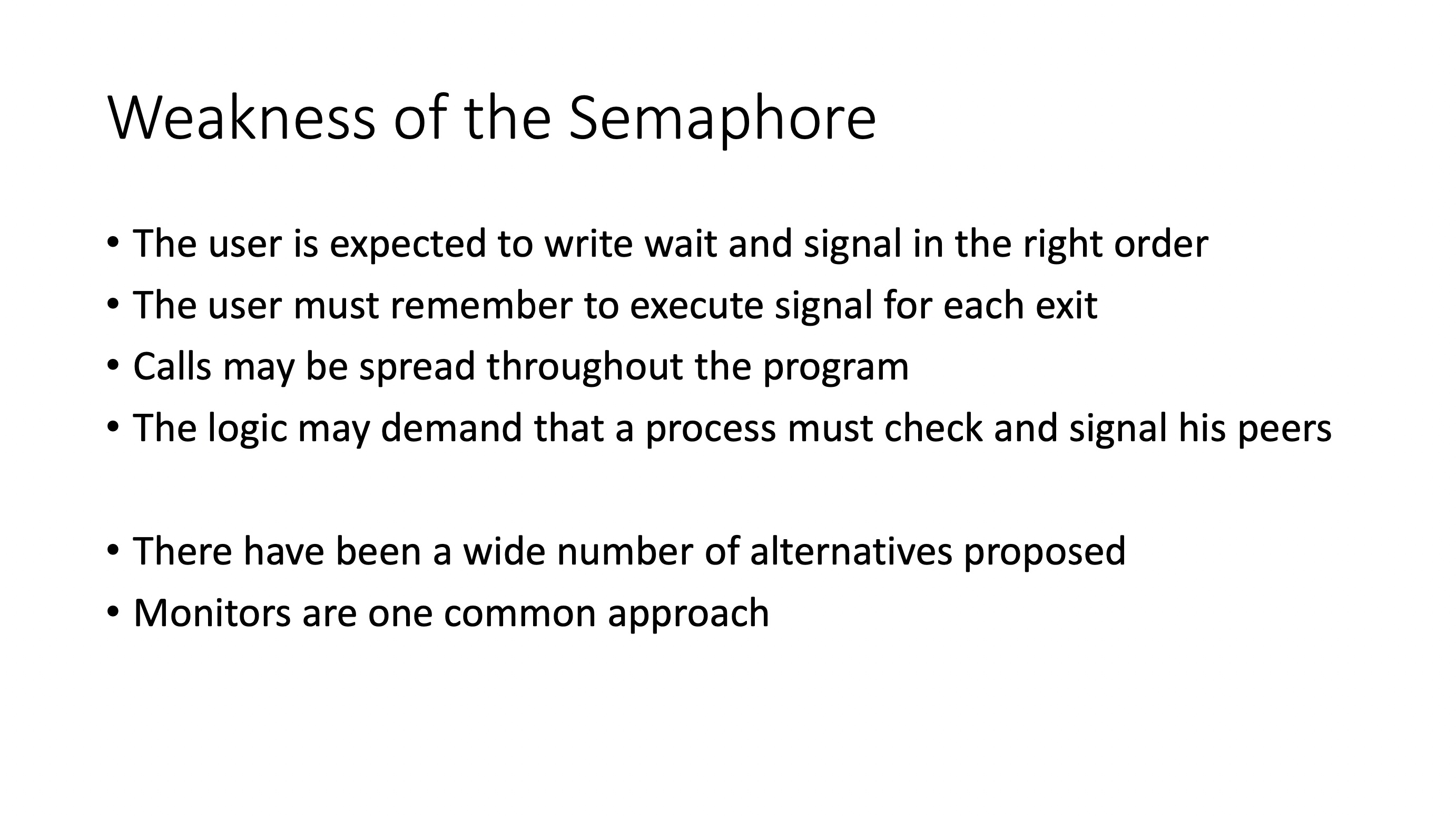
In class exercises #
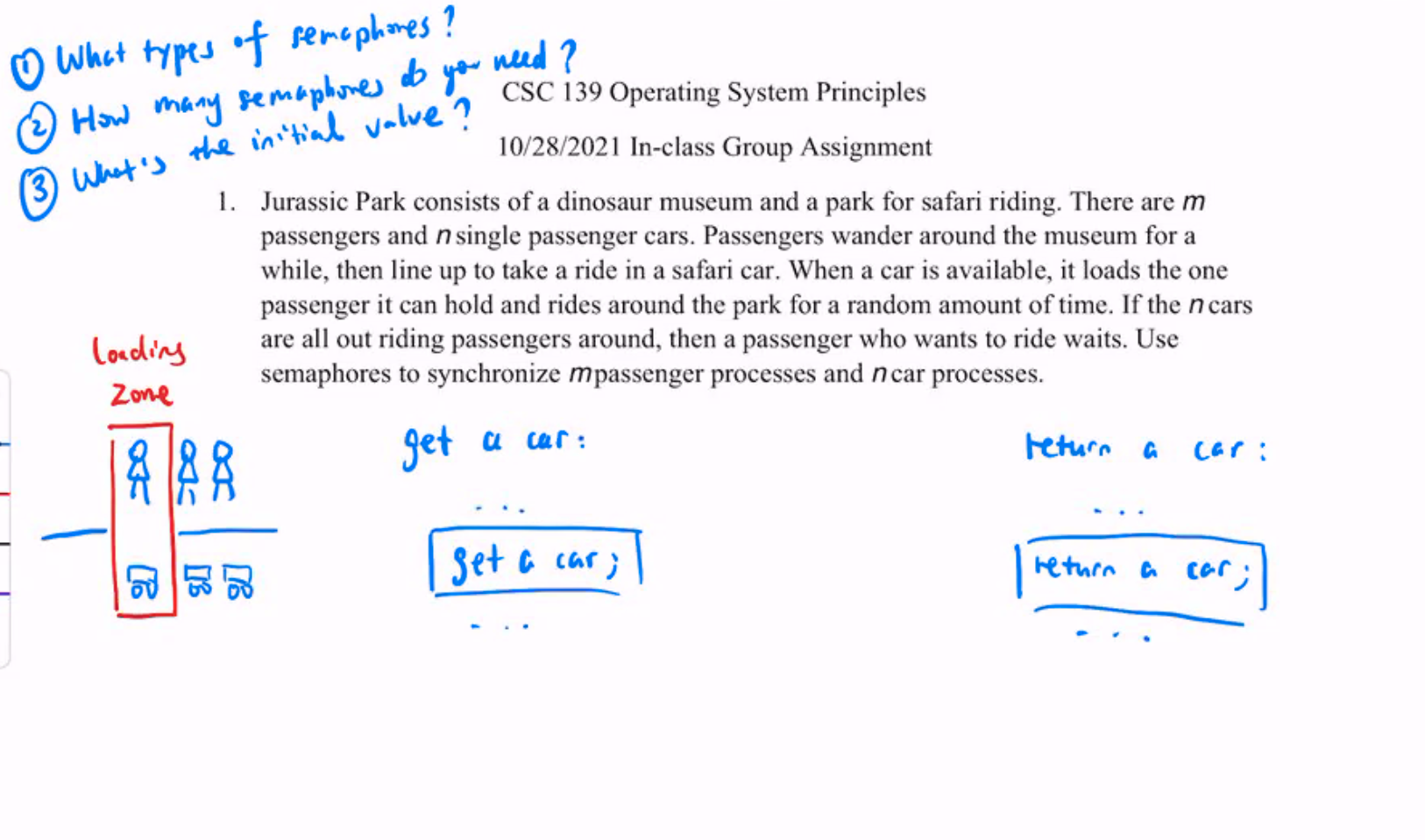
- 2 semaphores, 1 mutex semaphore allowing access to laoding zone, and 1 counting semaphore checking if there is a car waiting
- mutex initialized to 1 (unlocked)
- car counting semaphore initialized to \( n \)
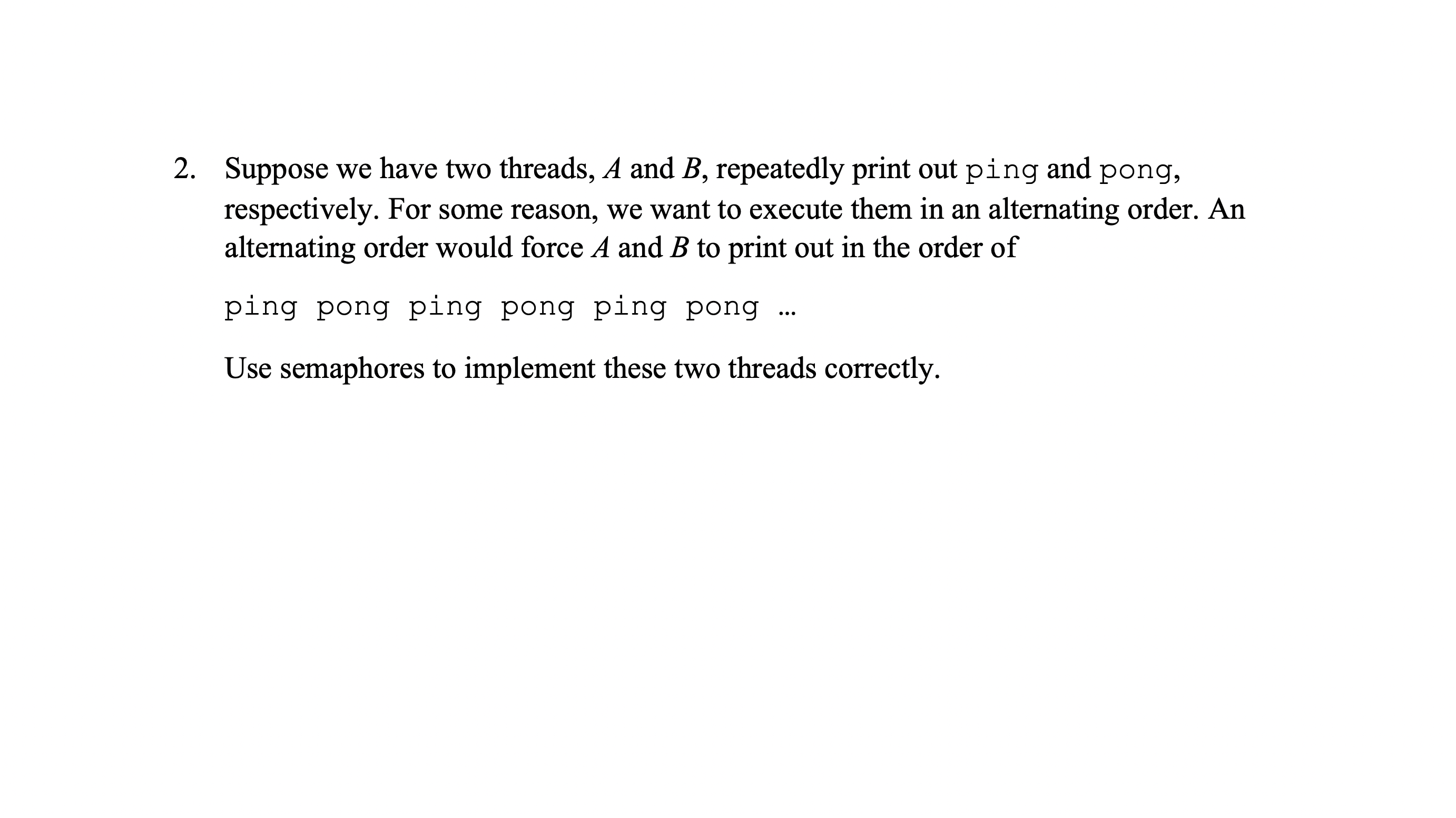
- 2 binary semaphores, with ping’s semaphore being set to 1 initially, and pong’s being set to 0.
- Since we want A to start, it’s initial semaphore is set to 1
- Since we want pong to be after, we set its initial semaphore value to 0
Thread A
while(1)
wait(A)
print "ping"
signal(B)
Thread B
while(1)
wait(B)
print "pong"
signal(A)
Deadlocks #
A situation where process sync becomes locked (like when all diners try to grab left chopstick in the philosopher’s problem). A system with limited resources may experience deadlock (if there were enough chopsticks then there wouldn’t be deadlock).

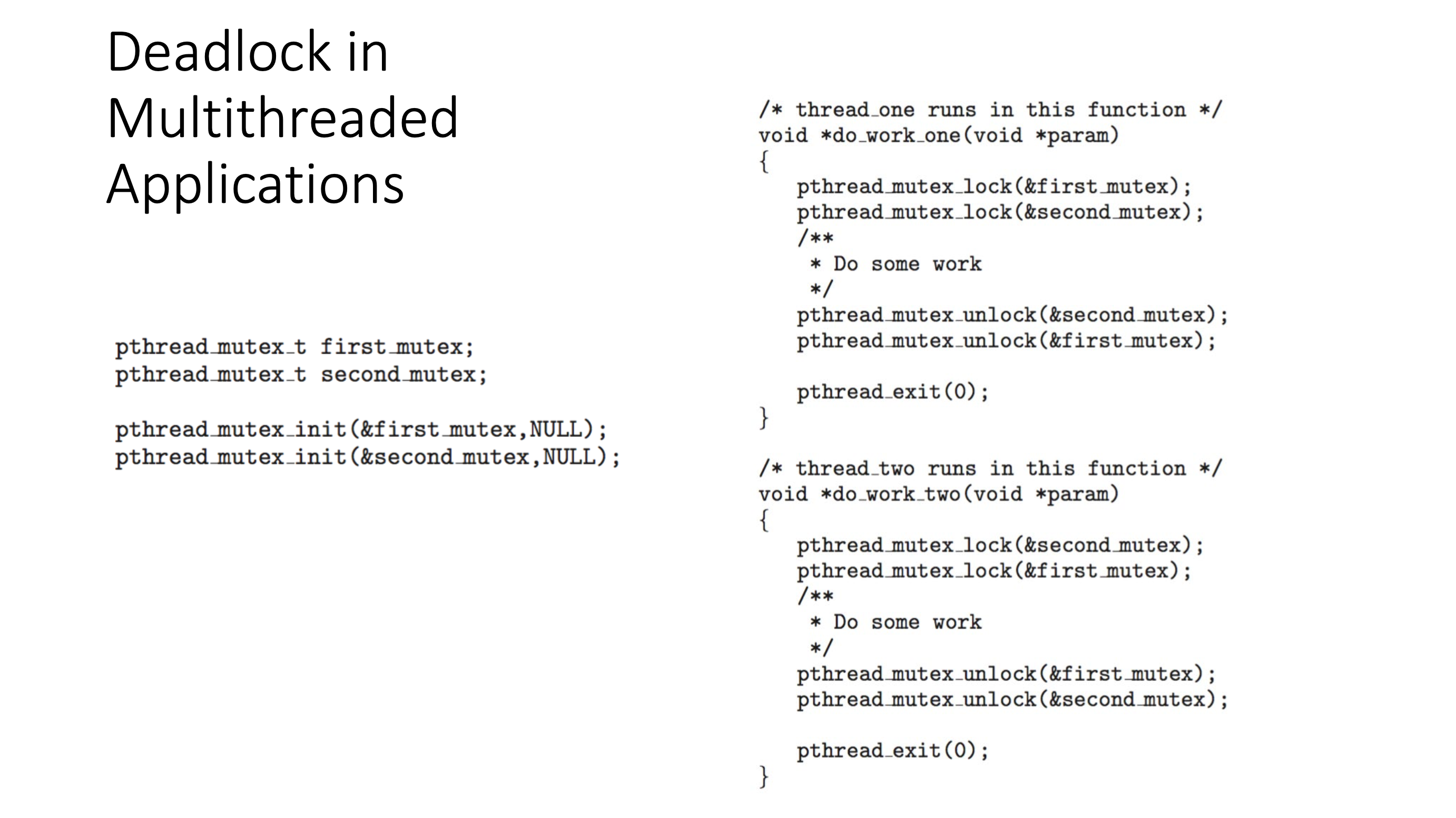
- if thread 1 runs first, it grabs the first mutex
- if there is a context switch, and thread 2 tries to gain mutex, it grab the second mutex
- when thread 1 tries to get second mutex, it will be blocked and have to wait
- both threads are now locked, waiting for each other
- eventually both threads will starve
This really happens because both threads are attempting to gain both mutexs in opposite order. If we visually graph this, you can see it forms a cycle:
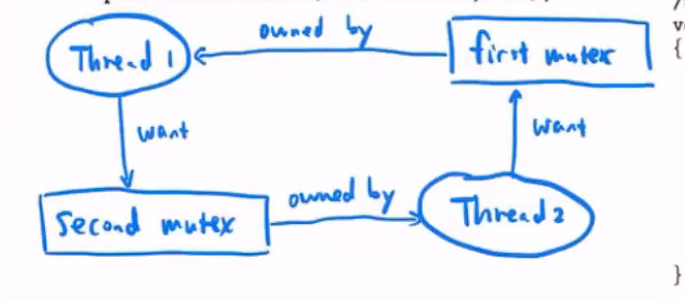

Characterization #

When trying to avoid deadlock, we just need to make 1 of these above conditions false.
Resource allocation graph #
The above graph of the thread 1/2 deadlock was a resource allocation graph.

- requests edges can be approved or denied
- an assignment edge represents something that has already happened

- request edges point to the entire resource
- assignment (allocation) edges point to the particular instant of the resource
